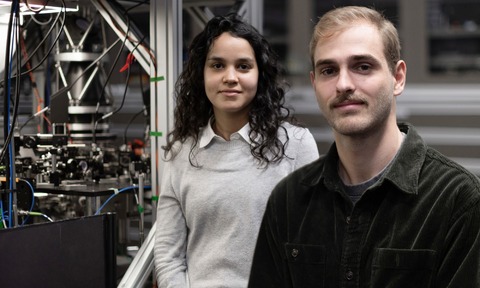Quantum go-‘slow’ allows first view of chemical process
29 Aug 2023

Sydney university researchers have scored a scientific first by employing a quantum computer to observe a process critical in chemical reactions.
Until now, the rapid timescales involved have thwarted attempts to observe geometric processes in chemical dynamics, despite efforts dating back 70 years.
But, by employing quantum technology, the Sydney team was able to view the interference pattern of a single atom caused by one common geometric structure in chemistry: a conical intersection vital to rapid photo-chemical processes including light harvesting in human vision or photosynthesis.
Joint lead researcher and PhD student at the University of Sydney School of Chemistry, Vanessa Olaya Agudelo explained the novel use of a trapped-ion quantum computer enabled the researchers to design and map the problem before slowing the process down by a factor of 100 billion.
“In nature, the whole process is over within femtoseconds. That’s a billionth of a millionth – or one quadrillionth – of a second,” said Olaya Agudelo.
“Using our quantum computer, we built a system that allowed us to slow down the chemical dynamics from femtoseconds to milliseconds. This allowed us to make meaningful observations and measurements.”
She added that understanding the processes inside and between molecules would expand the potential for improvements in materials science, drug design, or solar energy harvesting and might aid other processes reliant on molecules interacting with light, “such as how smog is created or how the ozone layer is damaged”.
Using our quantum computer, we built a system that allowed us to slow down the chemical dynamics from femtoseconds to milliseconds
Vanessa Olaya Agudelo, Joint lead researcher, University of Sydney School of Chemistry
Her colleague and joint lead author Dr Christophe Valahu from Sydney’s School of Physics likened the technique to simulation of air patterns around a plane wing in a wind tunnel.
“Our experiment wasn’t a digital approximation of the process – this was a direct analogue observation of the quantum dynamics unfolding at a speed we could observe,” he said.
The quantum computer used to conduct the experiment is in the Quantum Control Laboratory of quantum startup Q-CTRL founder Professor Michael with the experimental effort led by study co-author Dr Ting Rei Tan.
Tan said: “This is a fantastic collaboration between chemistry theorists and experimental quantum physicists. We are using a new approach in physics to tackle a long-standing problem in chemistry.”
Research team leader was Associate Professor Ivan Kassal from the University of Sydney School of Chemistry and UoS Nano Institute. The research, ‘Direct observation of geometric-phase interference in dynamics around a conical intersection’, is published in Nature Chemistry (DOI: 10.1038/s41557-023-01300-3). See here for details, plus video below.
Pic: Vanessa Olaya Agudelo and Christophe Valahu (photo credit: Stefanie Zingsheim)

